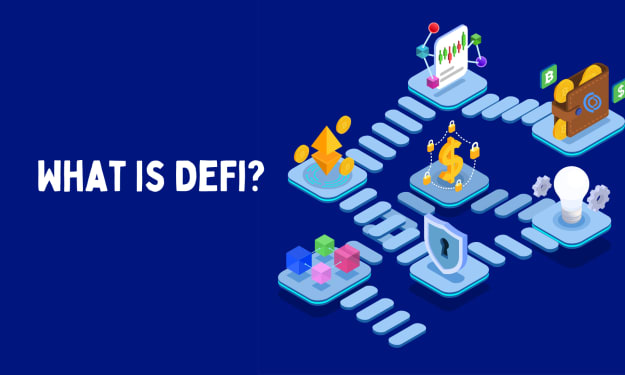Blockchain Technology: Explore the Backbone of Cryptocurrency with In-depth Analysis
Blockchain technology has emerged as the backbone of cryptocurrency, revolutionizing various industries and challenging traditional systems. Originally introduced as the underlying technology for Bitcoin, blockchain has evolved to become a versatile tool with applications beyond digital currencies. This article aims to provide an in-depth analysis of blockchain technology, exploring its fundamental principles, mechanisms, and impact on various sectors. By delving into the intricacies of blockchain, its potential benefits and challenges, and its role in shaping the future, we can gain a comprehensive understanding of this transformative technology.

Understanding Blockchain Technology:
a. Decentralization: Blockchain operates on a decentralized network of computers (nodes) that collectively validate and record transactions. This decentralization ensures transparency, security, and immutability of data.
b. Distributed Ledger: The blockchain consists of a distributed ledger that records all transactions across the network. Each transaction, known as a block, is cryptographically linked to the previous block, forming an unbroken chain of information.
c. Consensus Mechanisms: Blockchain networks rely on consensus mechanisms to ensure agreement among participants regarding the validity of transactions. Proof of Work (PoW), Proof of Stake (PoS), and other consensus algorithms secure the network and prevent fraudulent activities.
d. Smart Contracts: Smart contracts are self-executing agreements that are stored on the blockchain. They automatically execute predefined terms and conditions when specific conditions are met, removing the need for intermediaries.
Impact on Various Industries:
a. Finance and Banking: Blockchain technology has the potential to transform traditional financial systems by enabling faster, more secure, and cost-effective transactions. It eliminates intermediaries, reduces settlement times, and enhances transparency, while also opening up opportunities for financial inclusion.
b. Supply Chain Management: Blockchain offers transparency and traceability in supply chains, reducing fraud, counterfeiting, and inefficiencies. It enables real-time tracking, verification of product authenticity, and simplifies the management of complex supply networks.
c. Healthcare: Blockchain has the potential to revolutionize healthcare by securely storing and sharing patient data, enabling interoperability between different healthcare providers, and enhancing data privacy and security.
d. Voting Systems: Blockchain-based voting systems can improve transparency, integrity, and security in elections. They can enhance voter participation, prevent tampering, and ensure accurate vote counting.
e. Intellectual Property: Blockchain can provide an immutable and transparent record of intellectual property rights, simplifying the management, licensing, and protection of digital assets.
Challenges and Considerations:
a. Scalability: Blockchain networks face challenges in scalability, as the size of the ledger and the number of transactions increase. Developing solutions that maintain decentralization while improving scalability is a crucial area of research and development.
b. Energy Consumption: Proof of Work consensus algorithms, used by some blockchains, consume substantial amounts of energy. Exploring more energy-efficient consensus mechanisms, such as Proof of Stake, can help address this concern.
c. Privacy and Security: While blockchain offers transparency and immutability, privacy concerns arise when sensitive data is stored on a public ledger. Balancing transparency with privacy protections and implementing robust security measures is essential.
d. Regulatory Frameworks: As blockchain technology continues to advance, legal and regulatory frameworks are evolving to address its unique challenges. Finding the right balance between innovation and consumer protection is a crucial consideration.
Future Perspectives:
a. Interoperability: Enhancing interoperability between different blockchain networks will enable seamless communication and data exchange, unlocking new possibilities for collaboration and integration across industries.
b. Scalability Solutions: Continued research and development focused on improving scalability and transaction throughput will be vital for blockchain's wider adoption and applicability.
c. Blockchain and Internet of Things (IoT): The integration of blockchain and IoT can create secure, decentralized ecosystems for IoT devices, enabling trust, data integrity, and automated transactions.
d. Governance and Standards: Establishing governance models and industry standards for blockchain technology will contribute to its wider acceptance and foster collaboration between various stakeholders.
Conclusion:
Blockchain technology is a transformative force with the potential to reshape industries and empower individuals by providing decentralized, transparent, and secure solutions. Understanding the fundamental principles, exploring its applications across various sectors, and addressing the challenges it faces are essential in harnessing the full potential of blockchain technology. As research and development continue, the future of blockchain holds immense possibilities, offering a foundation for innovation, efficiency, and trust in the digital era.
About the Creator
Huatin OU
Originally from Western China,live in Saskatoon as a freelance writer. vibrant energy of this city fuels creativity, lending a unique flair to work. a fusion of Eastern roots and Western experiences, captures the magic find in everyday life






Comments
There are no comments for this story
Be the first to respond and start the conversation.